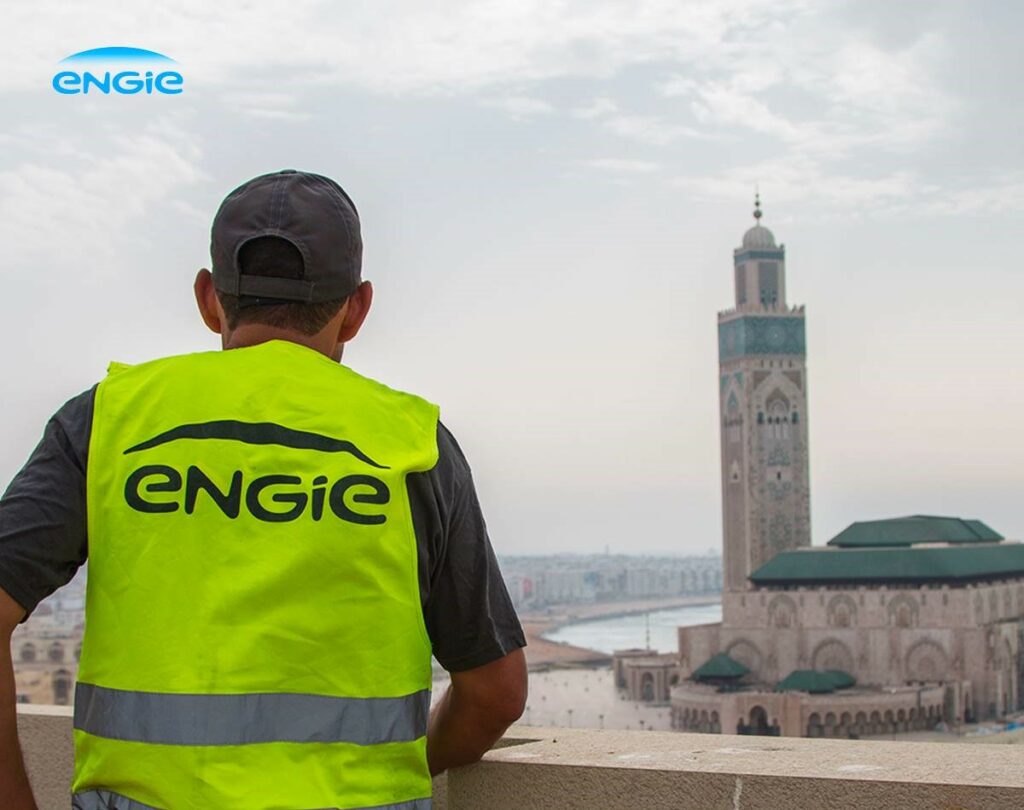In many instances, renewable energy subcontractors are not just a nice-to-have; they are pivotal to successfully executing projects. This is especially true when it comes to commercial and utility installers, Operations & Maintenance (O&M) organizations, and residential installers operating across multiple regions. The indispensability of renewable energy subcontractors stems from the unique and diverse skills they bring to the table, and their ability to deliver these in their local territories, making them essential players in the renewable sector.
Given the complexity, distributed nature, and scale of EV charging, battery energy storage systems (BESS), wind, and solar energy projects, managing subcontractors becomes a task of critical importance. It’s a balancing act that requires not only understanding the intricacies of renewable projects but also mastering the art of effectively coordinating services provided by external partners to maintain quality, safety, and cost-effectiveness.
This blog aims to demystify and streamline the process of subcontractor management in the renewable energy sector. We will delve into challenges and best practices that can enhance efficiency, ensure compliance, and foster a collaborative environment conducive to successfully completing renewable projects. Whether you are an established player or a newcomer in the field of renewable energy, these insights will provide valuable guidance in navigating the complexities of managing subcontractors, ensuring your projects not only meet but exceed expectations.
What is Subcontractor Management?
Subcontractor management is all about overseeing and coordinating third-party contractors hired to handle specific tasks within a larger project. It ensures that their work meets the quality standards, deadlines, and budgets while keeping communication smooth and expectations clear.
It includes a few key steps:
- Finding and Hiring: Picking the right subcontractors, negotiating fair terms, and signing agreements that clearly lay out responsibilities, deadlines, and payment terms.
- Keeping in Touch: Setting up a clear way to stay in contact, sharing updates, and resolving problems quickly to keep things on track.
- Tracking Progress: Regularly checking their work to make sure it’s meeting quality expectations, staying on schedule, and aligning with project goals.
- Ensuring Compliance: Making sure they follow all safety rules, legal requirements, and project guidelines.
- Managing Risks: Spotting any potential issues early and having backup plans ready to tackle them if needed.
- Payment and Review: Paying subcontractors on time after completing milestones and evaluating their performance for future projects.
What is a Subcontractor?
Subcontracting in the renewable energy sector is where a primary contractor assigns part of their contractual obligations and tasks to another entity, known as a subcontractor or partner. This practice is common in fields where projects are complex and/or require local presence and knowledge in multiple territories where the primary contractor may not be present—both qualities are often present in renewable energy & electrification projects.
Subcontractors are often specialists in specific areas and are hired to contribute their expertise to the project. These tasks vary, encompassing activities like conducting site surveys to more specialized functions such as electrical work, environmental assessments, or regulatory consulting.
The primary contractor maintains overall responsibility for a subset of the project’s overall scope, ensuring it meets the stipulated parameters and deadlines. This approach allows the primary contractor to utilize a diverse range of skills and expand their operational reach in different geographical areas, crucial for the success of renewable energy projects.
Why Do Renewable Operations Use Subcontractors?
Renewable organizations dealing with residential, commercial, and utility-scale projects use subcontractors for several reasons:
- Specialization and Expertise: Renewable energy projects can be highly specialized, requiring specific skills or certifications that the main contractor might not possess. Subcontractors with these specialized skills can ensure high-quality work and compliance with industry standards.
- Scalability and Flexibility: Subcontractors allow companies to scale their workforce up or down based on project demands. This flexibility is crucial in the renewable energy sector, where project sizes and timelines can vary significantly.
- Cost Efficiency: Hiring subcontractors can be more cost-effective than maintaining a large permanent staff. It allows companies to avoid the fixed costs associated with full-time employees, such as benefits and ongoing training.
- Geographical Coverage: Renewable energy projects are often spread out geographically. Subcontractors with local knowledge and presence can more efficiently handle projects in specific regions, reducing travel and logistical costs.
- Meeting Project Timelines: In an industry where timely project completion is critical, subcontractors can provide the necessary workforce and expertise to meet tight deadlines.
- Compliance and Regulations: Renewable energy projects often involve navigating a complex regulatory landscape. Subcontractors familiar with local regulations and compliance requirements can ensure that projects adhere to all necessary legal standards.
- Equipment and Technology: Subcontractors might have access to specialized equipment or technology that the primary contractor does not possess, which can be crucial for certain aspects of renewable energy projects.
- Focus on Core Competencies: By outsourcing certain tasks, the primary contractor can focus on their core competencies and aspects of the project where they add the most value.
- Market Adaptability: The renewable energy market is dynamic and subject to rapid changes in technology and regulation. Using subcontractors allows companies to quickly adapt to these changes without overhauling their entire operation.
How to Manage Subcontractors
Managing renewable energy subcontractors requires a multifaceted approach that balances clear communication, stringent quality control, and collaborative relationships. At the heart of effective management is establishing clear expectations and open lines of communication. This begins with detailed contractual agreements outlining every project aspect, from scope and timelines to quality standards and safety procedures.
However, the relationship with subcontractors extends beyond legal obligations. Regular meetings and progress updates are crucial for maintaining alignment and addressing any issues as they arise. This constant dialogue ensures that both the primary contractor and the subcontractors are on the same page, reducing the likelihood of misunderstandings or delays.

A critical aspect of managing subcontractors in the renewable energy sector is ensuring quality and compliance. This is not just about adhering to technical specifications but also involves a commitment to safety, quality, and regulatory standards. Regular site inspections and audits are essential to monitor the quality of work and compliance with safety regulations.
But beyond oversight, there’s an element of partnership and collaboration that can significantly enhance project outcomes. Encouraging a collaborative environment where subcontractors feel valued and part of the team can lead to innovative solutions and a higher level of commitment to project goals. This includes not only recognizing and rewarding good performance but also providing constructive feedback and support where needed.
Challenges With Subcontractor Management
In many cases, each subcontractor might operate independently, using their own methods and tools. This leads to a lack of standardization and cohesion, making it difficult to communicate efficiently, synchronize activities, track progress, and ensure consistency across different parts of the project. The absence of a unified system can result in miscommunications, delays, and even errors in project execution.
Another major challenge is managing access controls on sensitive project information and documentation, such as overall sales, marketing, and financial data. It is essential to strike a balance between sharing necessary information for the project’s success and protecting sensitive data that is not “need-to-know.” While some team members might have the authority to grant access to these documents, they may be reluctant due to confidentiality concerns. This creates a dilemma where transparency and collaboration clash with the need to safeguard critical business information.
Furthermore, the reliance on old-school, manual efforts like email, Google Drive folders, Dropbox, and link sharing for communication and document management complicates the situation. While widely used, these methods are not often efficient or reliable for handling complex project data. They often result in cumbersome communication, with excessive back-and-forth exchanges via email and phone calls. This can lead to information getting lost or outdated, misinterpretation of instructions, and delays in decision-making.
Solution: Scoops’ Software for Managing Subcontractors
Scoops’ software offers a comprehensive solution to the challenges faced when managing renewable energy subcontractors, addressing the key issues of streamlining operations, securing sensitive information, and improving communication. Scoop enables users to quickly tap into external, remote, and on-the-ground resources cost-effectively while not compromising quality, process, or efficiency.
Facilitating Your Virtual Project Team: With the ability to configure a Work App™ for each type of subcontractor, primary contractors can design the most optimal work experience based on the information the particular partner needs to see, tasks or checklists they need to complete, data and photos they should capture, and ultimately the next stakeholder to whom they should submit their work product. This hugely strategic capability makes it practical for organizations to harness the power of subcontractors and freelancers without incurring traditional quality, efficiency, and compliance costs.
Centralizing Data and Streamlining Operations:
Scoop’s project management software allows for the centralization of data, project management, and workflow automation. This centralization is critical for coordinating activities among various subcontractors, ensuring that everyone is working with the most current information and following standardized procedures.
- Unlimited User Business Model & Enhanced Access Controls: With its unique unlimited user plans Scoop enables organizations to easily extend the use of their central operations hub to subcontractors and partners. With fine-grained and flexible features that enable control over who can access sensitive documents and information, Scoop helps manage the delicate balance between transparency and confidentiality. Subcontractors are given access to Scoop but only see what they need to due to fully customizable access controls.
- Improving Communication and Collaboration: The reliance on manual and disjointed methods of communication can be overcome with Scoop’s tools. The platform provides integrated communication systems that allow for more efficient collaboration. This includes features like a mobile app for fieldwork, where subcontractor teams can capture site photos and communicate in real time with your management team, reducing the need for back-and-forth emails and phone calls.
- Automating and Mobilizing Workflows: Scoop’s Work Apps™ digitize and automate manual tasks, making it easier to standardize data collection and workflow stages. This reduces the time spent on repetitive tasks and ensures that all team members, including subcontractors, follow the same processes.
Scoop’s GLOO™ Integration Service allows for the integration of various software tools, such as CRM, ERP, and accounting systems. This integration helps in reducing duplicate data entry, ensuring that information flows seamlessly between different systems used by subcontractors and project managers.
With LOOXY™ Analytics & Reporting, users get real-time project data updates and personalized dashboards, which is essential for managing large-scale renewable energy projects. This feature allows for efficient tracking and reporting, enabling project managers to oversee projects and tasks managed by subcontractors.
In summary, Scoop’s software suite addresses the challenges of managing renewable energy subcontractors by providing a unified platform that enhances collaboration, streamlines operations, secures sensitive data and improves overall project efficiency.
Get Ready to Simplify Subcontractor Management with Scoop!
In conclusion, the role of subcontractors in renewable energy projects is both pivotal and multifaceted, particularly in large-scale installations like EV charging, battery energy storage systems (BESS), and wind and solar energy projects. Managing these subcontractors efficiently is crucial due to the specialized skills and flexibility they bring to the table.
Scoop’s software suite emerges as a powerful tool in this context. It simplifies the management of renewable energy subcontractors by centralizing data, streamlining operations, enhancing communication, and ensuring the security of sensitive information. The software’s capabilities in automating workflows, integrating with other tools, and providing real-time tracking and reporting are invaluable for overseeing complex projects. By leveraging such technology, renewable energy companies can enhance efficiency, ensure compliance, and foster collaborative environments, ultimately leading to the successful completion of renewable projects.
For more information on how you can make subcontractor management a breeze, reach out to one of our dedicated experts!


